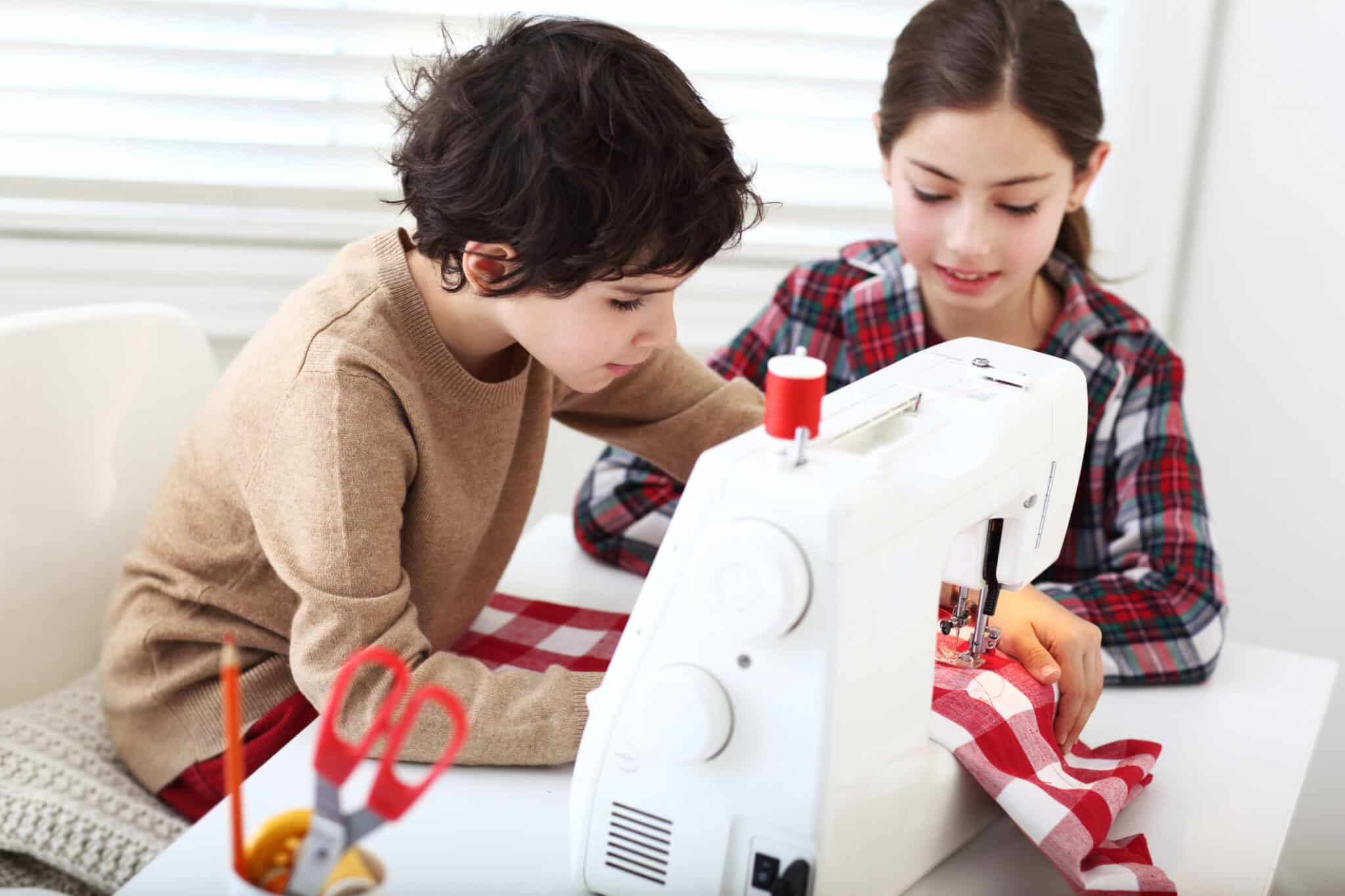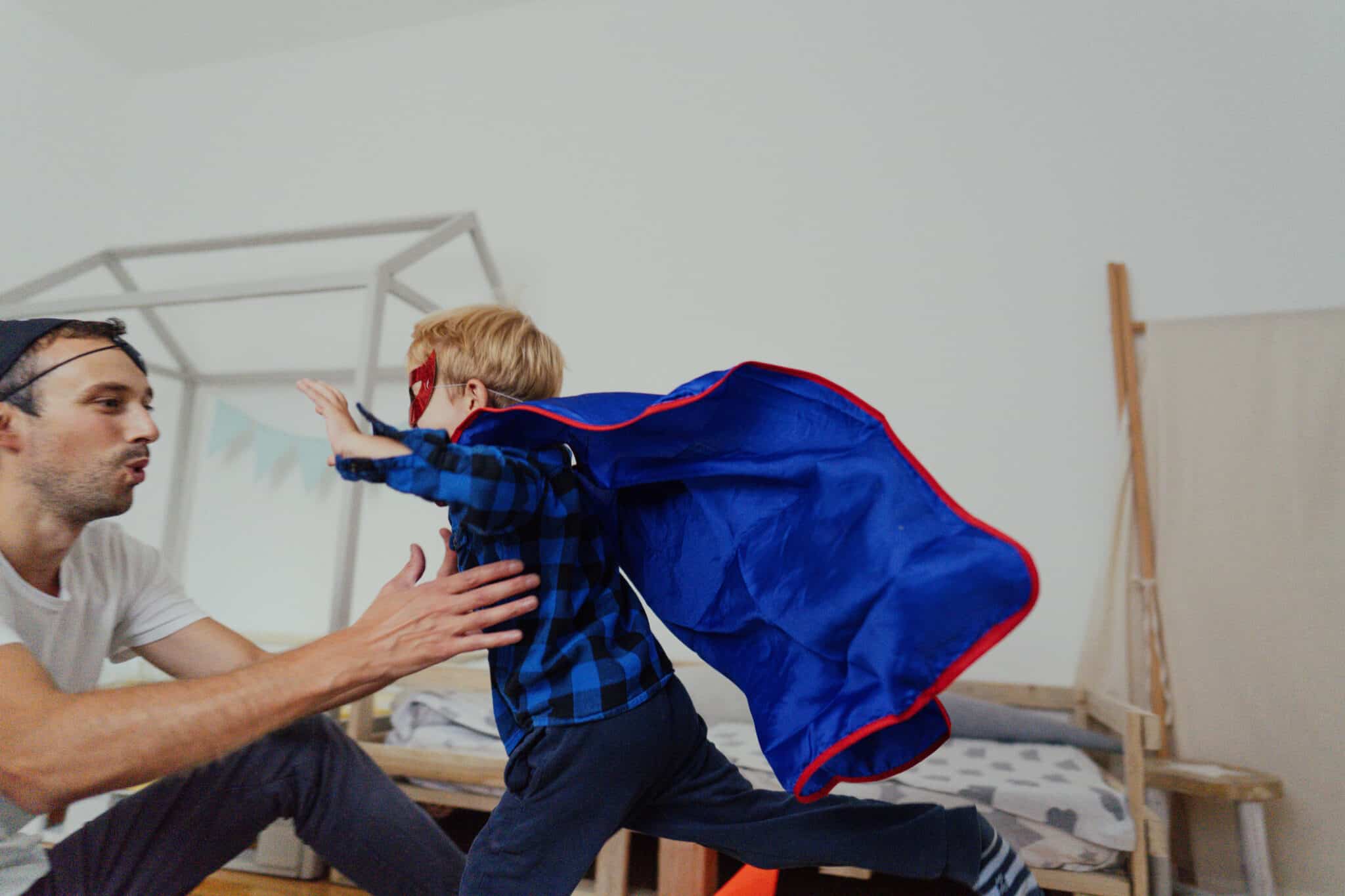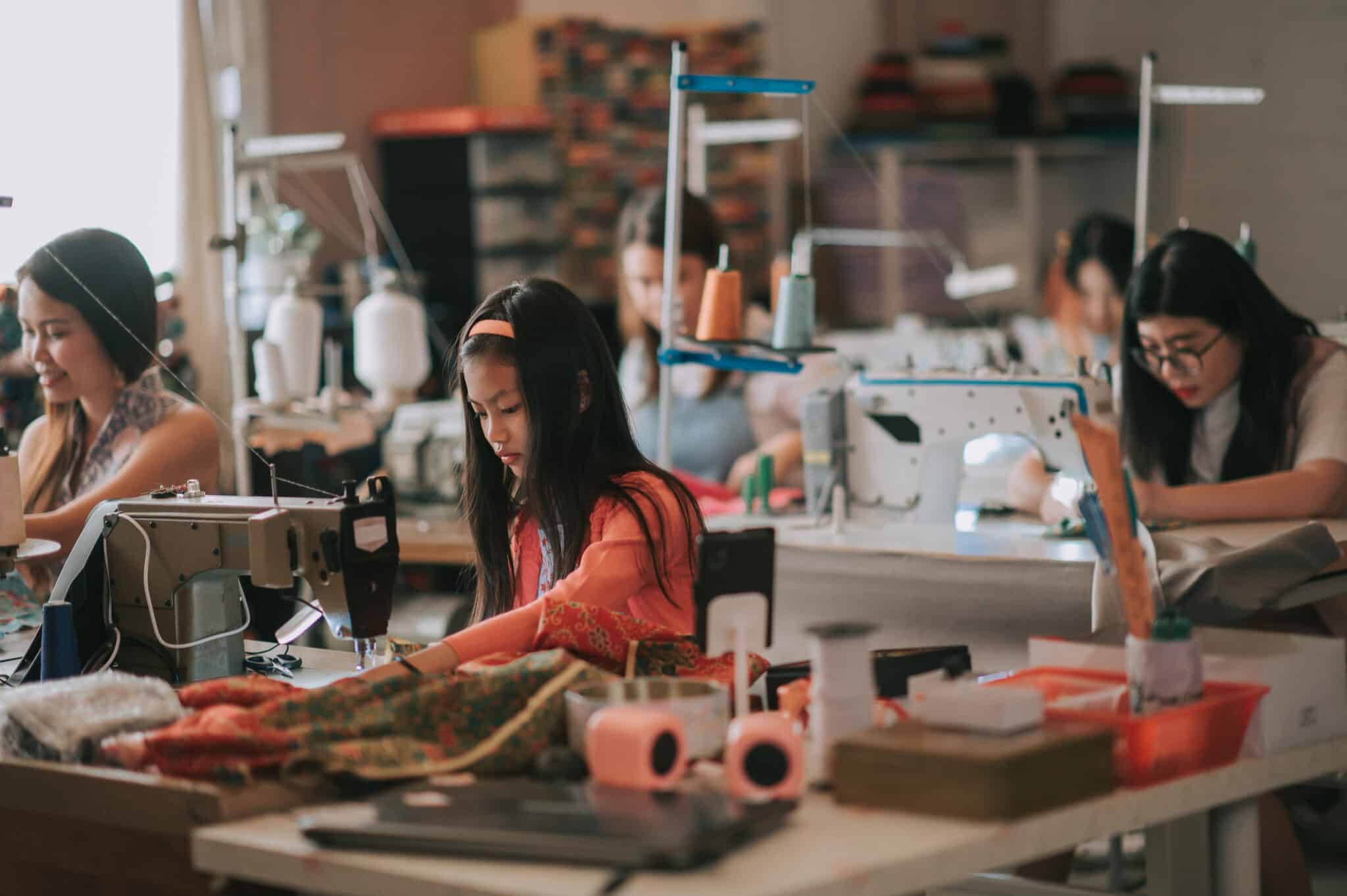Sewing is more than just a craft; it’s a valuable life skill that can foster creativity, patience, and a sense of accomplishment in kids. In a world dominated by digital screens and fast-paced activities, introducing your child to sewing can provide a refreshing and productive way to spend their time.
Benefits of Kids Learning to Sew
In a time when mass-produced goods dominate the market, sewing empowers kids to become creators rather than just consumers. Teaching children how to sew instills essential life skills such as problem-solving, hand-eye coordination, and patience. Moreover, it encourages them to embrace their individuality by crafting one-of-a-kind garments and accessories.
As parents, we can spark their imaginations, boost their confidence, and spend quality time together in a rewarding and educational way. So, if you’re eager to introduce your child to the world of sewing, keep reading for a comprehensive guide to help you embark on this creative journey together.
Whether your little one has expressed an interest in fashion, wants to create unique gifts for loved ones, or simply enjoys working with their hands, this guide is here to help you embark on a sewing journey with your kids. In this article, we’ll explore the basics of sewing, share tips for making it a safe and enjoyable experience, and show you how to nurture your child’s budding passion for this timeless art.
Stitching Basics or How to Get Started with Sewing
Knowing where to start when your kid wants to learn to sew can be challenging – even if you are a sewist! Breaking each little step of the sewing process down to the bare basics can be tricky… sometimes for even the most experienced sewists! But never fear! We put together this easy guide to getting your child started without overwhelming them.
Safety First: Basic Rules and Precautions
As a parent, you may wonder: Is sewing a safe activity for kids? After all, there are a lot of needles, pins, and sharp scissors that could hurt your child. How do you teach them to sew safely?
Start by always supervising their sewing activities, regardless of age or experience level. This immediate oversight allows you to address any issues promptly and offer guidance as needed. Select age-appropriate sewing tools and equipment, initially favoring blunt-tipped needles and soft fabrics for beginners.
Knowing when to transition your child from hand sewing to a sewing machine is crucial in their sewing journey. Readiness for a sewing machine is often determined by a combination of age, skill development, and confidence with handling tools. Typically, children as young as 8 to 10 can start learning the basics of a sewing machine, but it’s essential to gauge their maturity and coordination.
Teach your child safe practices such as keeping their fingers away from the needle, unplugging the sewing machine when not in use, and using cutting tools carefully. By instilling these habits and maintaining a watchful eye, you can create a secure sewing environment that nurtures your child’s creativity while keeping them safe.
Essential Sewing Tools and Supplies for KidsSetting your child up for sewing success means supplying them with the right notions and tools. You want to choose the right kinds of tools to ensure your child’s learning experience is as stress-free as possible!
When it comes to needles, it’s best to start with basic, large-eye, blunt-tipped needles that are easier for kids to handle. For younger children engaged in hand-sewing, consider large plastic needles ideal for little hands. As your child gains experience, you can gradually introduce different needle types and sizes. Take the time to explain the purpose of each needle type, such as embroidery vs. universal needles, and demonstrate how to select the right needle for the fabrics and projects at hand.
Teaching your child how to select appropriate fabrics for their projects is essential. Start with easy-to-sew fabrics like cotton or flannel. Explain how to recognize different fabric types, discuss a fabric’s suitability for specific projects, and emphasize the importance of prewashing fabric to prevent shrinkage and ensure a successful sewing experience.
If your child is ready to transition to a sewing machine, consider lightweight and user-friendly models designed specifically for kids. These kids’ sewing machines typically feature simplified controls and safety features. Research and choose a sewing machine that matches your child’s skill level and needs, ensuring they can comfortably manage it.

Setting Up a Safe Sewing Space
When it comes to sewing, creating an organized space is key to success – especially for children. Sewing notions are small and can be easily lost or misplaced if they don’t have a dedicated home. If your child is invested in their sewing hobby, make sure you set up a space for them to create.
You may be tempted to buy the first set of plastic bins you find at Target, but consider looking into specialized sewing furniture. Furniture designed by sewists for sewists makes organization fun and seamless (pun intended).
The first piece of furniture to look into is a sewing storage cabinet. These cabinets are designed to hold and store your sewing machine and feature specialized drawers and storage space to fit your child’s notions and sewing equipment. Perhaps best of all, sewing cabinets help sewists of all ages and skill levels sew longer and more comfortably because of their smart ergonomic design.
Consider buying a table and cabinet combination piece. If your child is a devoted sewist and needs a “headquarters” for their crafting, these are excellent choices. These sewing cabinet combos are designed to hold a sewing machine, thread, notions, cutting mat, and even fabric.
Having a separate storage system for your child’s fabric and patterns is also wise. Bulky bolts of fabric can be difficult to keep organized over time, so having a dedicated fabric storage system will prevent your floors, tables, beds, and couches from being covered in mountains of cotton and linen.
When deciding what sewing furniture is best for your child, examine their habits, needs, and wants. No sewing furniture is one-size-fits-all, so encourage your child to help pick out their sewing room setup.
Basic Sewing Techniques for Kids
Mastering these techniques will help your child develop confidence in their sewing skills and allow them to learn more. Plenty of learn-to-sew tutorials can be found online to reinforce your lessons… or even teach you something new, too! Here are a few basics to teach your child to set them up for sewing success:
- Threading a needle: Threading a needle is the first step in any sewing project. Show your child how to carefully thread the needle, explaining the importance of a clean cut on the thread end to prevent fraying.
- Knotting the thread: Teach your child to create a secure knot at the end of the thread. Encourage them to practice the “loop and pull” method, ensuring their stitches stay in place.
- Straight stitch practice: Begin with straight stitches on sturdy fabric. Help your child understand the up-and-down motion of the needle and the importance of maintaining even stitch lengths.
- Running stitch practice: After they’ve mastered the straight stitch, introduce the running stitch, a series of evenly spaced stitches. Encourage your child to create parallel lines or basic shapes to improve their stitching accuracy.
- Backstitch practice: Teach your child the backstitch, an essential technique for strong seams. Show them how to overlap each stitch with the previous one to reinforce their sewing.
- Turning corners and curves: As your child gains confidence, guide them in sewing corners and curves. Emphasize the technique of pivoting the fabric and maintaining consistent stitch spacing to ensure smooth, professional-looking results.
These fundamental sewing techniques provide a solid foundation for your child’s sewing journey. As they practice and master each skill, they’ll be well-equipped to tackle various sewing projects creatively and confidently.

Fun Beginner Sewing Projects for Kids
Your child may be drawn to sewing due to the promise of fun, adorable, handmade items at the end of the process. But choosing patterns and projects that match your child’s current skill level is essential – otherwise, they may bite off more than they can chew and be intimidated by the sewing process. Here are a few of our favorite easy sewing patterns for kids:
- Bandana Blanket: This quirky blanket comprises four bandanas sewn end to end. Your child can customize how many bandanas they use, their color choices, and more.
- Tooth Fairy Pillow: This pillow is fun and functional if your child is at the loose-tooth age. This felt project can be hand-sewn and is excellent for little hands.
- Drawstring Backpack: Making something practical can be incredibly fulfilling for a child! This easy drawstring backpack sewing pattern makes a great gift for friends and family.
- Fun Felt Monsters: Let your child get creative with these adorable monsters! This project is great for practicing cutting and measuring fabric.
- Superhero Cape: You know your child is super; let them show the world. This cape features simple shaping and can be customized for your child’s favorite color scheme.
Sewing Resources to Help the Kid Learn to Sew
When your child is first learning to sew, provide them with the resources they need to learn. There are many books and craft kits out there, but it can be difficult to decide which is best!
Starting with a fun sewing project kit, like the ones made by Klutz, is a great way to stoke your child’s creativity. These kits are comprehensive and beginner-friendly, and the crafts are designed to teach essential skills while making the crafting process fun. After giving sewing a try, they may be ready to read more detailed books about sewing.
Recommended Books for Beginner Sewists
Here are a few of our favorite books to teach kids to sew.
- “My First Sewing Machine Book” by Emma Hardy: This book is specifically designed for kids who are new to sewing machines. It provides clear explanations, colorful illustrations, and a variety of projects to help children build confidence in using a sewing machine.
- “Sewing School: 21 Sewing Projects Kids Will Love to Make” by Amie Plumley and Andria Lisle: This book is a favorite among young sewists and their parents. It features a collection of simple and appealing sewing projects that gradually introduce different techniques. The instructions are easy to follow, making it an excellent choice for beginners.
- “Sewing for Kids: Easy Projects to Sew at Home” by Alice Butcher and Ginny Farquhar: This book offers a range of projects suitable for children ages 5 and up. Detailed instructions and colorful illustrations encourage kids to explore their creativity and build their sewing skills.

Sewing Classes for Kids
Books and kits are a great starting point, but your child may hit a point where they need more personalized guidance on their sewing journey. Consider finding sewing classes for your child to attend to develop their skills further. When finding suitable sewing classes for your child, you have both online and in-person options to consider.
Online Sewing Lessons
Online sewing classes offer flexibility and accessibility, allowing your child to learn from the comfort of your home. Numerous platforms and websites host sewing courses designed specifically for kids. You can explore popular online learning platforms and websites dedicated to crafts and sewing, such as Outschool, Creativebug, and YouTube, which often feature kid-friendly sewing tutorials.
Additionally, specialized sewing schools offer virtual classes for children, providing a structured curriculum, access to experienced instructors, and opportunities for your child to showcase their work online.
In-person Learning Experience
On the other hand, in-person sewing classes provide a hands-on and social learning experience. Many craft stores and fabric shops host sewing classes for kids, offering well-equipped sewing spaces and access to knowledgeable instructors. When searching for such classes, visit your local craft stores and fabric shops and inquire about their offerings.
You can also explore community centers, community colleges, and schools for after-school or weekend sewing programs that introduce kids to sewing basics in a supportive environment. Don’t hesitate to ask other parents or guardians if they are aware of any sewing classes for kids in your area, as word-of-mouth recommendations can lead you to hidden gems of local sewing instruction.
Regardless of your choice, it’s essential to assess the class curriculum, instructor qualifications, and safety measures to ensure that the class aligns with your child’s age, skill level, and interests. With the right class, your child can embark on an exciting sewing journey with guidance and mentorship from experienced instructors.
If your child is already a passionate sewist, set them up for success with Arrow sewing furniture! We offer a multitude of sewing cabinets, chairs, tables, and more. Check out our catalog to see what’s best for your child.
